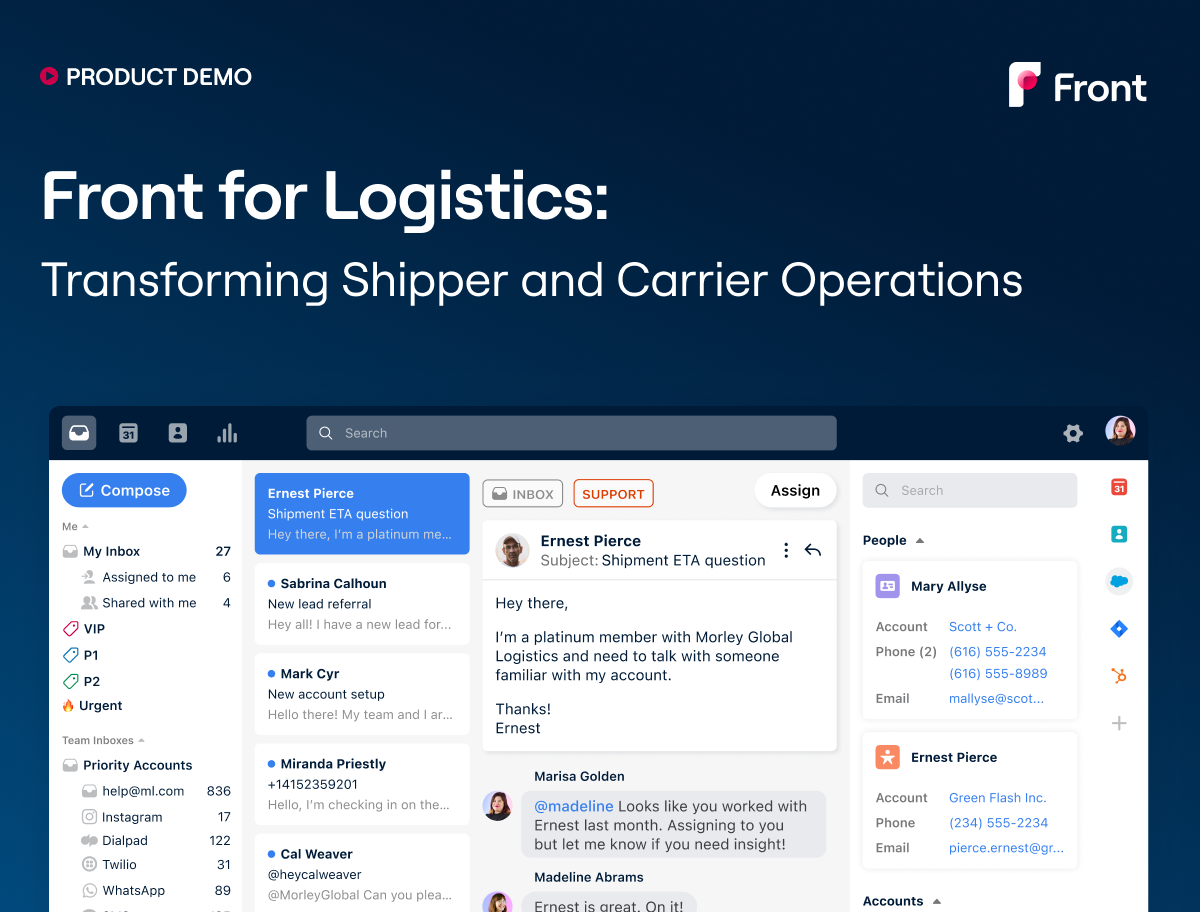Front for Logistics
Reply first. Quote faster. Win more.
Front helps 3PLs and brokerages streamline communication and deliver world-class service to shippers and carriers.

Reply faster to every message
When a customer has questions about a shipment, they expect a fast response—exceed those expectations with Front.
Do more work with less people
With Front, your team is more effective and can accomplish more every day, resulting in a lower cost per load.
Answer every quote first
Automatically assign quote requests to the right person, allowing them to respond with speed and win more business.
500+ 3PLs, brokerages, and forwarders trust Front
Ultimately, Front drives efficiency. It removes unnecessary work so the team can focus on the critical 1% of exceptions that truly matter.
Ship more freight with Front
Get control of your inbox and aggregate channels
Replace outdated email clients with powerful shared inboxes designed for efficiency. Plus, manage WhatsApp, SMS, Chat, and more from the same hub.
Automate routing and assignment to reduce email volume
Design custom workflows that get messages to the right person based on geographic location, capacity, account ownership, and more.
Collaborate without the endless email chains
Never forward a long thread to your teammate again. Instead, highlight the text you need them to read and loop them in with a simple comment.
Track individual performance and coach your team
Response time, customer satisfaction, busiest time of day and more—get built-in analytics that help you improve your service quality.
Sennder saves 3,500 hours per month and reduced email volume by 80% using Front and integrations.
Estes Forwarding Worldwide reduced daily email volume by 80% or 725 emails per person per day.
MNX maintained a 15-minute response time SLA even as volume increased 4-times and cut employee churn by 20–25%.
Teams who use Front win more business
Inbound Sales
Never let a quote request slip through the cracks again. Automatically get messages to the right owner for a fast reply.
Operations
Move more freight with less people by automating manual processes. Refocus time on keeping customers updated.
Customer Service
Provide fast, accurate responses to shipper and carrier questions without having to switch between multiple tools.
Account Management
Exceed expectations for your assigned shipper and carrier accounts with a 365-degree view of their message history.





Integrate your TMS, Carrier Identity Provider, Rating Tools, and more
Bring data into Front and increase agent productivity





How do we stack up?
Front
For teams who need to deliver exceptional customer service with speed.
Designed for collaboration—single message with team visibility
Integrates data from all systems
Automation eliminates manual workflows
Provides robust analytics on teams and customers
One inbox that integrates all communication channels into a single interface
Designed for personal, one-to-one communication... that’s about it.
Distribution groups result in duplicate copies and missed messages
Customer context lives in 3rd party apps
Does not support automation
Cannot be measured, so it can’t be improved
Team members switch between different tools for different channels
[With Front] we are doing 400-600 automatic quotes per business day, and 100-200 per non-business day currently. This leads to more won business, and we’re closing more deals.




